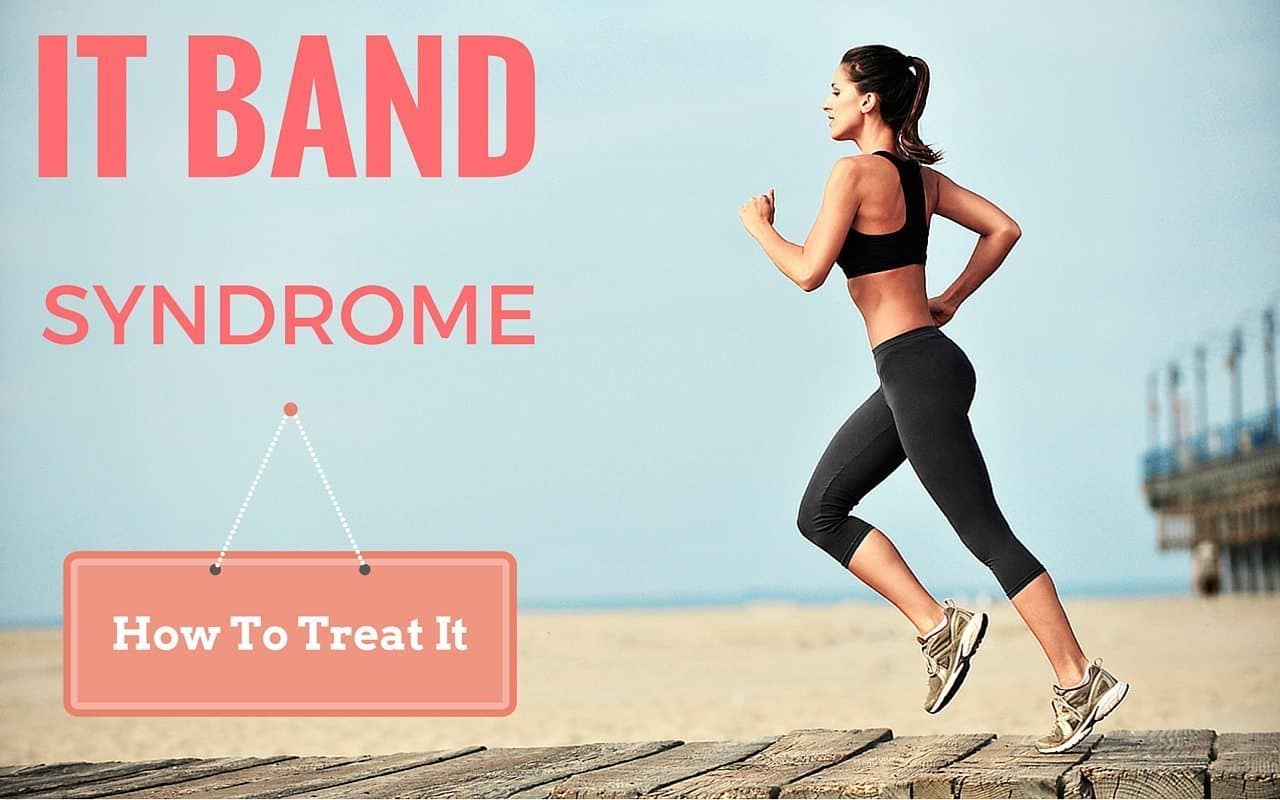
Iliotibial (IT) band syndrome is a common injury among athletes, runners, and even those who participate in regular physical activity. This condition causes pain and discomfort on the outer parts of the knee, often affecting a person’s ability to engage in their favorite activities. To manage and prevent IT band syndrome, it is essential to understand what it is, its causes, and proven methods of treatment.
The iliotibial band is a thick, fibrous tissue that runs along the outside of the thigh, connecting the hip to the knee. Its primary function is to stabilize the knee and provide support during physical activity, particularly with repetitive motions like running or cycling. When the IT band becomes tight or inflamed, it can lead to friction and irritation, resulting in the painful condition known as IT band syndrome.
To address IT band syndrome effectively, an individual should be familiar with the signs and symptoms as well as the various treatment options available. These may include non-surgical methods like stretching, strengthening exercises, or physical therapy, and in more severe cases, surgical intervention. Addressing the issue promptly and accurately is crucial to minimize pain, improve function, and prevent further injury.
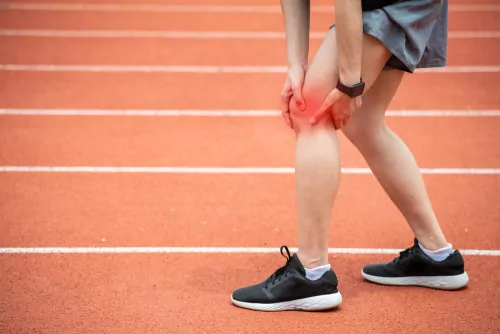
The iliotibial band (IT band) is a thick, fibrous band of tissue that runs along the outside of the thigh, extending from the hip to the knee. It is made up of fascia which is a type of connective tissue that surrounds and supports muscles, tendons, and bones. The IT band plays a crucial role in stabilizing the knee joint during various physical activities like walking, running, and cycling.
The primary function of the IT band is to coordinate the movement of the muscles and tendons surrounding the knee. It is connected to various muscles such as the tensor fasciae latae (TFL) and the muscles of the buttocks (gluteus maximus), which help to control the movement of the hip and thigh.
In addition, it also aids in the distribution of forces across the knee joint, reducing stress on the joint ligaments and ensuring proper alignment. IT band syndrome is a common injury among runners and cyclists, characterized by pain and inflammation on the outside of the knee.
This condition occurs when the IT band becomes tight or inflamed, typically due to repetitive friction as it slides over the lateral femoral condyle, a bony prominence at the knee joint. Factors that can contribute to IT band syndrome include poor flexibility, muscle imbalances, weak hip muscles, and improper running or cycling techniques.
To treat IT band syndrome, a combination of rest, ice, and anti-inflammatory medications is often recommended to help reduce inflammation and pain. Physical therapy exercises targeted at improving flexibility, correcting muscle imbalances, and strengthening the hip and gluteal muscles can also be beneficial.
In some cases, modalities such as ultrasound or corticosteroid injections may be considered to alleviate symptoms. Proper footwear, running or cycling form, and biomechanics are also essential in preventing the recurrence of IT band syndrome.
IT Band Syndrome, also known as Iliotibial Band Syndrome, is a common cause of pain and discomfort among athletes, particularly runners. It is a condition characterized by inflammation and friction of the iliotibial band (IT band), a thick fibrous tissue that runs along the outside of the thigh, from the hip to the knee.
The IT band is crucial for stabilizing the knee during physical activities such as running, cycling, and hiking. However, repetitive movements and overuse can lead to IT band irritation, causing friction between the tissue and the thigh bone (femur). This friction leads to a painful inflammation in the affected area, which is most commonly felt on the outer side of the knee.
Several factors contribute to the development of IT Band Syndrome. Some of these include improper training techniques, muscle imbalances, and inadequate warm-up routines. Runners who consistently run on uneven surfaces or those who suddenly increase their mileage may also be at a higher risk of developing this condition.
There are various treatment options available to alleviate the pain and inflammation caused by IT Band Syndrome. These treatments typically focus on addressing the underlying causes and providing relief from symptoms. Some common treatment methods include:
IT Band Syndrome, although painful, can be effectively managed through preventive measures and appropriate treatment strategies. By understanding the condition and seeking timely intervention, athletes can reduce their risk of developing chronic pain and continue participating in their favorite activities.
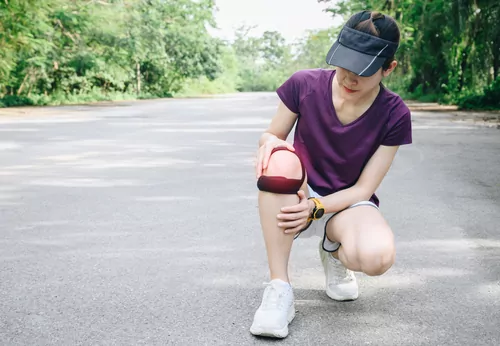
IT band syndrome, also known as iliotibial band syndrome, is a common cause of pain on the outer part of the knee. The signs and symptoms of this condition can vary, but there are some common ones that can help identify it.
Individuals with IT band syndrome may experience pain on the outer part of the knee, which is typically aggravated by repetitive activities such as running or cycling. This pain can range from a moderate ache to a sharp, stabbing sensation, and it often intensifies during activities that require repetitive knee flexion and extension.
Swelling and redness can also be present in cases of IT band syndrome. The area around the outer knee may become inflamed, leading to a feeling of tightness or tension. This tension can cause a noticeable click or snap as the IT band moves over the knee joint, particularly when the knee is bent and straightened. This clicking sensation can be accompanied by a burning sensation, which can range from mild to severe.
In addition to these common symptoms, some people with IT band syndrome may experience other discomforts such as:
Treatment for IT band syndrome typically involves a combination of methods, including rest, ice, and targeted stretching and strengthening exercises. In more severe cases, physical therapy or other interventions may be necessary. It’s important to consult with a healthcare professional for accurate diagnosis and appropriate treatment recommendations.
IT Band Syndrome is an overuse injury, often affecting athletes and individuals who engage in activities that require repetitive leg movements. There are several factors that contribute to IT Band Syndrome, and understanding these causes can be key in both prevention and treatment.
One major cause of IT Band Syndrome is activity and form. When an individual participates in activities that involve repetitive bending and straightening of the knee, such as running or cycling, it can lead to inflammation and irritation of the tendons that surround the IT band. Improper form or gait during these activities can also put added stress on the IT band, exacerbating the issue.
Tendons play a crucial role in IT Band Syndrome, as they connect muscles to bone. When the IT band becomes tight or inflamed, it can create friction against the thigh bone, causing discomfort and pain. Although the IT band is made of strong, fibrous tissue, overuse can lead to tendon degeneration and vulnerability to injury.
Certain anatomical factors can predispose an individual to IT Band Syndrome. For example, individuals with bowed legs or those who have a natural tendency to run with their feet turned out may experience more tension on the IT band during activities like downhill running. This can increase the likelihood of IT Band Syndrome occurring.
Weakness in the hip muscles can also contribute to IT Band Syndrome. The hip muscles help to control the movement of the legs during activities like running and walking. When these muscles are weak or imbalanced, it can result in poor alignment, which places additional stress on the IT band.
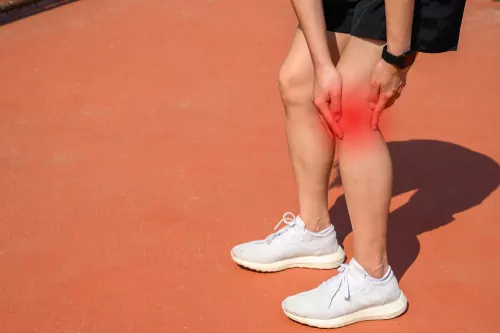
IT band syndrome is a common injury experienced by runners, cyclists, and endurance athletes. There are several factors that can increase the likelihood of developing this painful condition.
One of the most significant risk factors is overuse. Endurance athletes who participate in repetitive motion sports, such as running and cycling, put continuous strain on their IT bands, making them more susceptible to injury. This is especially true for individuals who suddenly increase their training volume or intensity without giving their bodies time to adjust.
Another risk factor is knee arthritis. People with knee arthritis may have an altered gait, which can lead to increased strain on the IT band. This additional strain can cause the band to become inflamed and irritated, resulting in IT band syndrome.
Weakness in certain muscle groups, particularly the gluteal muscles and the hip abductors, can also contribute to IT band syndrome. Weak gluteal muscles and hip abductors may cause an individual’s legs to rotate inward during activities like running and cycling. This improper alignment puts extra strain on the IT band and can lead to the development of the syndrome.
Not stretching regularly or adequately can also be a risk factor. Failing to properly stretch and warm up before engaging in athletic activities can leave muscles tight and susceptible to injury. Additionally, neglecting to stretch after exercise may further exacerbate the issue, leading to a higher likelihood of developing IT band syndrome.
Initially, IT band syndrome can usually be diagnosed by a sports medicine specialist or a physical therapist during a physical examination. The evaluation includes an assessment of the patient’s history, symptoms, and mechanism of injury. Pain at the lateral aspect of the knee during specific movements or actions, such as running, squatting, or stair climbing, may indicate IT band syndrome.
To confirm the diagnosis and rule out other possible causes of pain, such as a meniscus tear or a structural abnormality, the healthcare provider may opt for imaging studies. These may include x-rays or ultrasound, which can visualize the soft tissues and detect any inflammation or thickening of the IT band.
During the physical examination, a sports medicine specialist may evaluate the patient’s biomechanics, muscle flexibility, strength, and overall joint stability. This analysis may identify imbalances in strength or flexibility that contribute to IT band syndrome. Specific tests, such as the Ober test or Noble compression test, can also help determine if the pain is due to the IT band.
Additionally, the healthcare provider may consider the following diagnostic factors:
Once the diagnosis is confirmed, the sports medicine specialist or physical therapist will work with the patient to develop an appropriate treatment plan, tailored to the individual’s needs and goals.
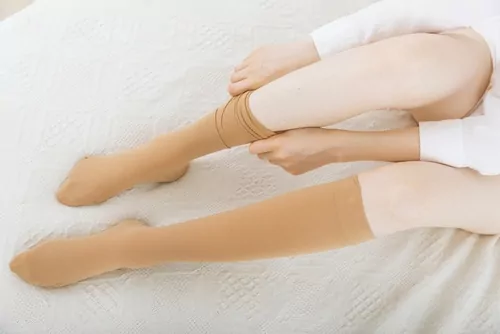
Fortunately, there are several non-surgical treatment options to address IT band syndrome effectively. These methods focus on alleviating pain, reducing inflammation, and promoting overall healing. The following paragraphs will discuss these various treatment approaches.
One of the primary non-surgical treatment options for IT band syndrome is rest. Allowing the inflamed tissue to heal is crucial, as continued activity may worsen the pain or cause further injury. During this period of rest, it may also be helpful to use an ice pack on the affected area.
Ice can help reduce inflammation and provide temporary pain relief. For optimal results, it’s generally recommended to apply ice for 15-20 minutes, several times a day.
In addition to rest and ice, patients may benefit from compression and warmth. Compression, typically in the form of a supportive brace or band, can help stabilize the IT band and alleviate pain. On the other hand, using a heating pad or warm towel can promote blood flow and encourage healing.
Stretching exercises can also play a vital role in resolving IT band syndrome. Regularly performing targeted stretches and maintaining flexibility in the hips, glutes, and IT band can help reduce tightness and alleviate pain. Some effective stretches include the standing IT band stretch, the seated IT band stretch, and the glute stretch.
Physical therapy is an essential aspect of the non-surgical treatment of IT band syndrome. A trained therapist can guide patients through appropriate stretches and strengthening exercises, which may include using a foam roller to perform self-myofascial release. This technique can help reduce tension and tightness in the IT band and surrounding muscles.
In some cases, a healthcare provider may suggest a steroid injection to help alleviate pain and reduce inflammation. However, this option should be used sparingly, as repeated injections can weaken the IT band and make it more susceptible to injury.
Lastly, anti-inflammatory medications, such as Advil or Motrin, can provide relief from pain and inflammation. These non-prescription drugs should be taken as directed by a healthcare provider, ensuring patients follow the recommended dosage and duration guidelines.
Using non-surgical treatment methods like rest, ice, stretching, physical therapy, and medications, individuals with IT band syndrome can typically find relief and return to their regular activities.
IT Band Syndrome is a common injury that affects the iliotibial band, a thick band of fibrous tissue running along the outer side of the thigh. Exercise and rehabilitation are crucial components of treating this condition effectively.
Stretching and warming up are essential before starting any exercise program. Regularly stretching the IT band and the surrounding muscles can improve flexibility and reduce tightness. A useful warm-up exercise is the standing hip stretch, which targets the IT band and hip muscles. Additionally, ensuring a proper cool down after exercising aids in minimizing muscle tightness.
Incorporating resistance band exercises can significantly help in strengthening the hips, glutes, and thigh muscles, thus alleviating IT band strain. Some effective resistance band exercises include clamshells, lateral band walks, and monster walks. These exercises promote stability and reduce the risk of future injuries.
Rehabilitation focuses on restoring flexibility and the range of motion in the affected leg. Physical therapists may recommend specific exercises to improve flexibility, such as foam rolling for self-myofascial release and dynamic stretching that incorporates movements like leg swings.
If pain persists or worsens during the course of exercise and rehabilitation, it is essential to consult a healthcare professional for further evaluation and guidance. Implementing a well-rounded exercise and rehabilitation plan, which combines stretching, strengthening, and flexibility exercises, can significantly aid in the effective treatment of IT Band Syndrome.
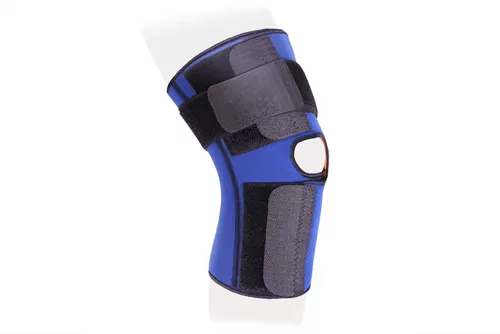
In some cases, conservative treatment methods may not be enough to alleviate the symptoms of iliotibial band syndrome. In these situations, surgical treatment options may be considered. Surgical interventions for IT band syndrome aim to reduce tension and friction on the iliotibial band, alleviating pain and inflammation in the knee joint.
One common surgical procedure for treating IT band syndrome is iliotibial band release surgery. This involves making a small incision on the outside of the knee, through which the surgeon can access the iliotibial band directly. The surgeon then removes a small portion of the band, effectively loosening it and reducing irritation on the knee joint.
Another surgical option is lateral retinacular release surgery. In this procedure, the surgeon makes an incision close to the knee joint to access the lateral retinaculum – a group of strong fibers supporting the kneecap. By cutting and then reattaching these fibers, the surgeon can release tension on the iliotibial band and alleviate the symptoms of IT band syndrome.
Surgery for IT band syndrome is generally performed as an outpatient procedure under general anesthesia. Post-operative recovery typically involves several weeks of reduced activity and restricted weight-bearing on the affected leg, followed by a structured physical therapy program to restore strength and function to the knee.
It is crucial to note that surgical treatments should be considered only if conservative treatments have been exhausted, and the patient’s quality of life is severely affected by the symptoms. A thorough consultation with an orthopedic surgeon is essential to evaluate the patient’s suitability for surgery and discuss the potential risks and benefits.
Preventing IT band syndrome involves a combination of activity modification, proper running form, and targeted exercises. To avoid overuse injuries, runners should gradually increase their mileage and intensity, as well as incorporate sufficient rest days into their training schedule.
Furthermore, maintaining proper running form can help distribute stress evenly across the body, reducing strain on the IT band.
Strength and flexibility are key components in reducing the risk of IT band syndrome. Incorporating exercises that target the hip abductors, such as clamshells and side-lying leg lifts, can improve muscle balance and support. Additionally, regular hip and glute stretches can increase overall flexibility, minimizing the chances of IT band tightness.
One effective tool for IT band recovery and prevention is foam rolling. This technique helps release muscle tension and promote recovery by improving blood flow to the soft tissues. When used consistently, foam rolling can alleviate discomfort and prevent future bouts of IT band syndrome.
In the event that IT band syndrome does occur, early treatment can help speed up the recovery process. Individuals should take a break from activities that exacerbate the pain and focus on low-impact exercises, such as swimming or cycling, to maintain fitness levels.
If necessary, consulting with a healthcare professional can ensure that the treatment plan addresses the root cause of the problem, preventing further complications.
For more information on our Copper Infused Compression Sleeves, Click Here!
IT band syndrome can be diagnosed by a healthcare professional, such as a physiotherapist or sports medicine specialist. They will typically start by taking a detailed history of the patient’s symptoms, activities, and exercise habits.
A physical examination will follow, focusing on the hip, knee, and lower leg. The healthcare provider may also assess muscle strength, flexibility, and joint mobility. In some cases, they may recommend imaging studies, such as an ultrasound or MRI, to rule out other conditions.
The most effective treatments for iliotibial band pain usually involve a combination of approaches. Initial treatment may include rest, ice, compression, and elevation (RICE) to help reduce inflammation and pain. Non-steroidal anti-inflammatory drugs (NSAIDs) can also be helpful for pain management.
A physiotherapist or sports medicine specialist can recommend specific exercises to stretch and strengthen the muscles around the IT band. They may also suggest modifications to the patient’s training regimen and provide guidance on proper footwear and running techniques. In more severe cases, a corticosteroid injection or other advanced therapies may be considered.
When dealing with IT band syndrome, it’s generally recommended to avoid exercises that cause pain or exacerbate symptoms. High-impact activities, such as running and jumping, can worsen IT band pain.
Additionally, exercises that involve excessive bending and twisting of the knee, like deep squats and lunges, should be approached with caution. It’s important to consult with a healthcare professional to determine the appropriate modifications and exercises for each individual’s specific needs.
The best sleep position to alleviate IT band pain may depend on the individual and the severity of their symptoms. In general, sleeping on the unaffected side with a pillow between the knees can help reduce pressure on the affected leg and promote better alignment of the hip and spine.
Experimenting with different sleep positions and using pillows for support may help patients find the most comfortable position for their unique situation.
The healing time for IT band syndrome can vary depending on the severity of the condition and the individual’s adherence to their treatment plan. With an appropriate combination of rest, therapeutic exercises, and modifications to exercise habits, individuals may start to see improvement within a few weeks.
However, it is not uncommon for the complete recovery process to take several months. Patience, consistency, and working closely with a healthcare professional can contribute to a successful recovery.
If left untreated, IT band syndrome can lead to worsening pain, inflammation, and reduced function in the affected leg. This may make daily activities and physical exercise increasingly difficult.
Additionally, untreated IT band syndrome can contribute to the development of other musculoskeletal issues, such as knee or hip joint problems, as the body compensates for the pain and altered mechanics. Seeking prompt diagnosis and appropriate treatment can help prevent complications and ensure a better quality of life.